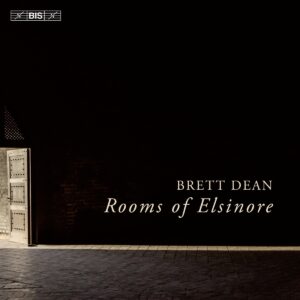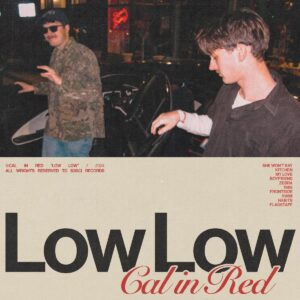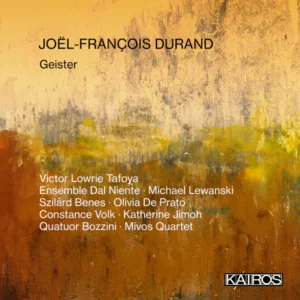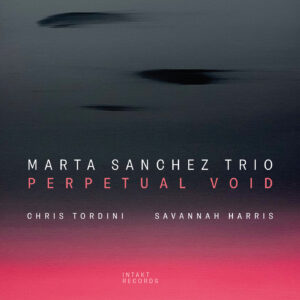Brett Dean
Rooms of Elsinore
BIS CD
Jennifer France, soprano; Lotte Betts-Dean, mezzo-soprano
Volker Hemken, bass clarinet
James Crabb, accordion
Juho Pohjonen, piano
Andrey Lebedev, classical guitar
Swedish Chamber Orchestra
Brett Dean, violist and conductor
Composer and violist Brett Dean has spent a number of years engaging with Hamlet, creating a controversial, successful, and musically compelling eponymous opera premiered in the UK in 2017 and subsequently produced at the Metropolitan Opera. Rooms of Elsinore (BIS, 2024) collects pieces serving as character sketches written in advance of the opera, those recasting material from the opera that premiered concurrently or subsequent to its premiere, and new musical imaginings of Hamlet. It is fascinating to compare to the opera’s music, but one needn’t have heard it to find Rooms of Elsinore an engaging stand alone listen.
The vocal work And Once I Played Ophelia is sung by soprano Jennifer France, who is accompanied by the Swedish Chamber Orchestra, conducted by Dean. Its text is adapted from Shakespeare by Matthew Jocelyn, and it is a visceral piece cast in five movements. Interestingly, Jocelyn uses words that Ophelia says in the play and also lines directed at her (Hamlet’s “get thee to a nunnery”) The first section, marked “Fast, breathless,” is rife with stridency (a deliberate expression, not because France’s voice is anything but pliant) and intense, angular lines. “Hushed, distant, mysterious” begins with pianissimo utterances that indeed sound far off. Eventually, the singing moves closer in the soundstage, now lyrical yet enigmatic in expression. The third movement, marked “Fast, agitated,” uses the text “This is the ecstasy of love” as a recurrent motif that is elaborately described. France demonstrates adroitly rendered, ringing high notes alongside intimidating vocal fry. Dean employs brisk ostinatos with tritone weighted harmonies to add to the hysteria. It closes with a breathless recitative passage, as if all the energy has dissipated like the air from a balloon. The music moves attacca into the fourth section, “extremely still.” From questioning pianissimo to altissimo sustained notes, an entire range of expressive vocality is brought to bear in the “willow tree” text by France. The section concludes with a high register cello solo recasting some of the soprano’s music. The final section, “Slow austere,” begins by harmonizing the cello’s music with the string section, with clarion sostenuto lines followed by ones in supple decrescendo, employing the “Good night ladies … sweet ladies” text. The piece ends with a mysterious, thwarted gesture in the instruments. And Once I Played Ophelia … brings the listener straight into the soundworld of Dean’s Hamlet, and is superlatively performed by France and the Swedish Chamber Orchestra.
Dean and pianist Juho Pohjonen play the duo The Rooms of Elsinore, each musically describing part of the castle. It begins with “I. The Dark Gate,” with descending scalar string lines set against sepulchral bass melodies in the piano. Gradually, the viola and piano crescendo and ascend together to their high registers. The viola then plays rhythmic lines against chordal sections in the piano, the stringed instrument bridging to the second movement with an altissimo ostinato. “II. The Four Gate Courtyard” continues the viola line alongside lush verticals from the piano amid tuplet flourishes. A gradual decrescendo closes the movement, only to be followed closely upon by “III. The Platform,” with a sliding tone abetted theme in the viola against repeated notes and arpeggiations, including a bass register flourish, in the piano. A pause is followed by the viola descending in sliding harmonics against low register punctuations in the piano. Open strings close the movement. “IV. The King’s Chamber” positively bustles with florid runs, pizzicato passages, ascending chromatic harmonies, and quick attacks. As the centerpiece of the piece’s seven-movement framework, it is the longest movement (4’02”), and also the most developmentally consistent, presenting as a rondo. Sustained viola with microtones and punctilious fragments from the piano are developed in “V. The Chapel,” while silences are interspersed by duo attacks in “VI. The Queen’s Chamber,” which part way through splits runs between them. The movement ends with repeated note passages and a chromatic viola melody contrasted with color chords in the piano. Rooms of Elsinore concludes with “VII. The Trumpeter’s Tower,” in which repeated bass notes in the piano are juxtaposed with high chords and a liquescent viola melody. A long decrescendo ensues, with high viola harmonics and a slowed-down set of piano harmonies.
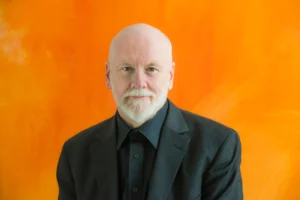
Gertrude Fragments is performed by mezzo-soprano Lotte Betts-Dean and classical guitarist Andrey Lebedev. “I cast thy knighted color off” begins the group with a wide-ranging, angular setting. Betts-Dean has a versatile instrument, with a strong lower register and blossoming high notes. The guitar part is well-crafted, with elements of lute songs alongside chromatic harmonies and modernist gestures, notably the acerbic attacks in the second song, “Wring from him my cause.” The texts are adaptations of statements by Hamlet’s mother, Gertrude. They are more aphoristic than the Ophelia texts, but still afford wide emotional range. The third song, “My too much changed son,” is melismatic, almost sobbing at its beginning before a sense of gravitas is regained. “How is’t with you?” is the shortest and sparest of the songs, almost a preparation for the concluding “If words be made of breath,” which includes plaintive sighs alongside glissandos.
Bass clarinetist Volker Hemken performs Confessio, a ten minute long solo that references the entrance of Polonius. It is a technical tour-de-force, depicting the emotional tumult of the scene in lines throughout the compass of the instrument, special techniques, and a wide dynamic range.
In the final piece, accordionist James Crabb is the soloist in the twenty-minute long concerto The Players. Material from the analogous scene in the opera included Crabb as part of the cast, playing alongside pantomiming actors. The concerto includes an introduction and closing material for Crabb added to musical material from the opera, deftly translated in its scoring for the ensemble. In the play/opera, Hamlet nearly loses control of his faculties, with manic explosions and a clear desire for revenge. The scene is depicted not only by the accordion, but taunting winds, bumptious percussion, and bitonal strings.
The Players is an energetic closer for Rooms of Elsinore, an inspiring recording that suggests that Dean’s obsession with Hamlet may have room yet for more music about the dark prince of Denmark. If the works here are his last exploration of the play, Dean is still left with a tremendous legacy. One of my favorites recordings thus far in 2024.
-Christian Carey
